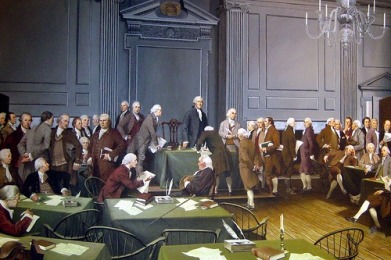Senate Confirmation of a Supreme Court Nominee: An Online Deliberation
AP Collegeboard Standards

IV. Institutions of National Government: Students must become familiar with the organization and powers, both formal and informal, of the major political institutions in the United States including the Congress, the presidency, the bureaucracy, and the federal courts. Students are expected to understand:
- the functions performed and not performed
- the powers they do and do not possess
- the power balances and relationships between these institutions and how they change, esp. in crises.
- ties/linkages between the various branches of national government and political parties, interest groups,
- the media, and state and local governments.
State Standards
12.4 Students analyze the unique roles and responsibilities of the three branches of government as established by the U.S. Constitution.
12.4.5. Discuss Article III of the Constitution as it relates to judicial power, including the length of terms of judges and the jurisdiction of the Supreme Court.
12.4.6. Explain the processes of selection and confirmation of Supreme Court justices.
12.4.5. Discuss Article III of the Constitution as it relates to judicial power, including the length of terms of judges and the jurisdiction of the Supreme Court.
12.4.6. Explain the processes of selection and confirmation of Supreme Court justices.
National Standards
How Does the Government Established by the Constitution Embody the Purposes, Values, and Principles of American Democracy?
- How are power and responsibility distributed, shared, and limited in the government established by the United States Constitution?
- How is the national government organized and what does it do?
ISTE National Educational Technology Standards (NETS) for Students
2.0 Communication and Collaboration: Students use digital media and environments to communicate and work collaboratively, including at a distance, to support individual learning and contribute to the learning of others.
3.0 Research and Information Fluency: Students apply digital tools to gather, evaluate, and use information.
4.0 Critical Thinking, Problem Solving, and Decision Making: Students use critical thinking skills to plan and conduct research, manage projects, solve problems, and make informed decisions using appropriate digital tools and resources.
5.0 Digital Citizenship: Students understand human, cultural, and societal issues related to technology and practice legal and ethical behavior.
3.0 Research and Information Fluency: Students apply digital tools to gather, evaluate, and use information.
4.0 Critical Thinking, Problem Solving, and Decision Making: Students use critical thinking skills to plan and conduct research, manage projects, solve problems, and make informed decisions using appropriate digital tools and resources.
5.0 Digital Citizenship: Students understand human, cultural, and societal issues related to technology and practice legal and ethical behavior.
